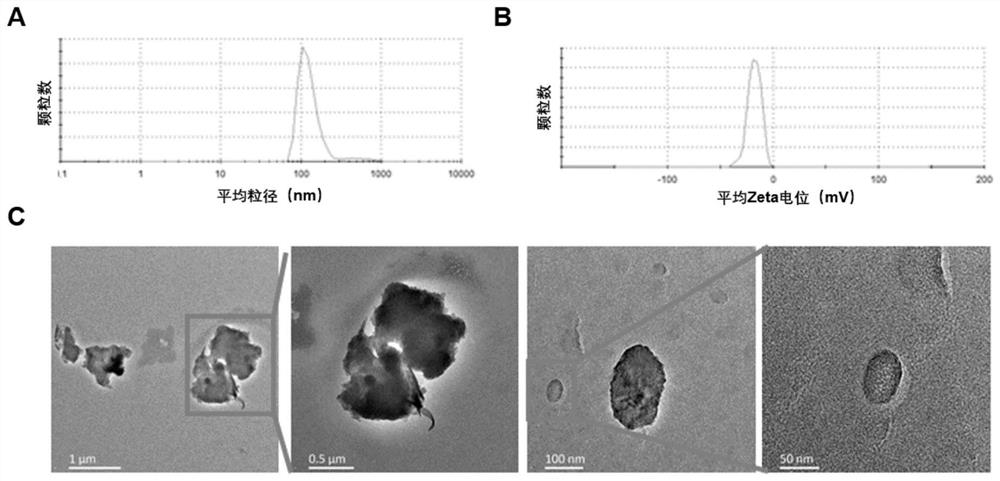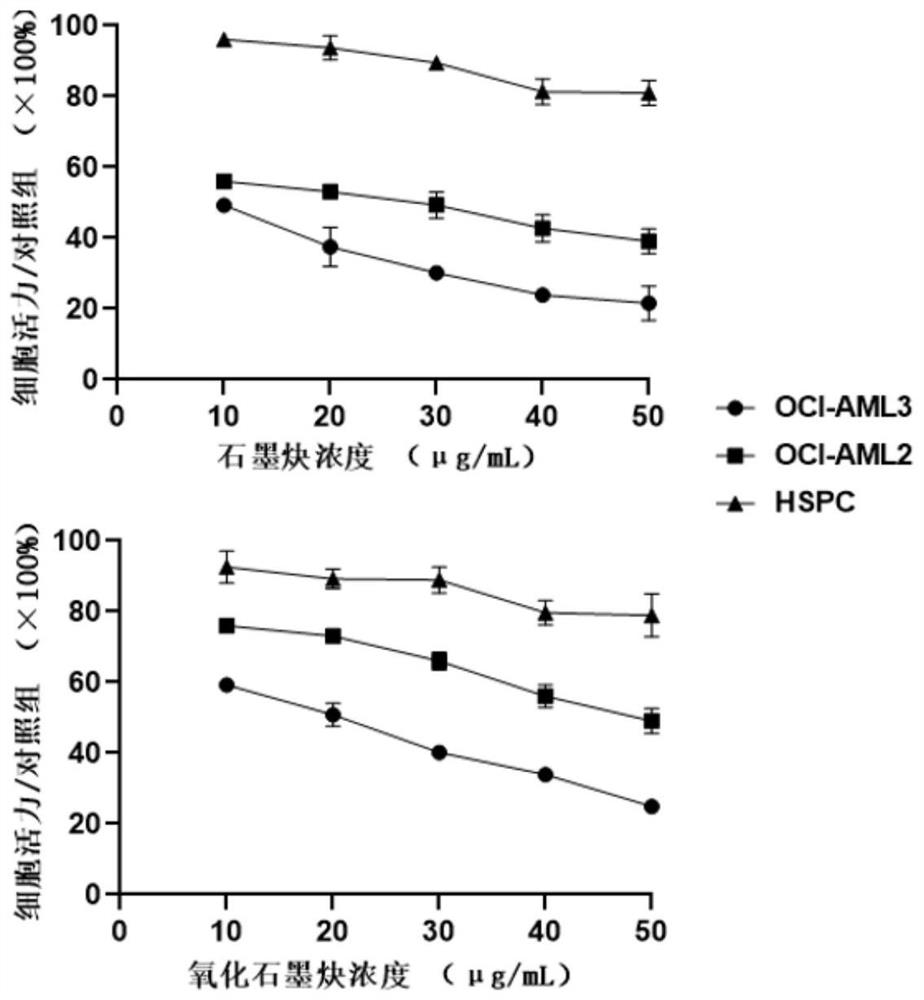A graphyne derivative that can treat leukemia
A technology of graphyne and leukemia cells, applied in the field of biomedicine, can solve the problems of unreachable tumor drug concentration, drug aggregation, multidrug resistance at effective concentration, etc.
- Summary
- Abstract
- Description
- Claims
- Application Information
AI Technical Summary
Problems solved by technology
Method used
Image
Examples
Embodiment 1
[0029] Graphdiyne and graphdiyne oxide were ultrasonically dispersed in ultrapure water at a concentration of 10 mg / mL. Detect the relevant properties of graphyne and graphyne oxide: including overall size (transmission electron microscope), hydrodynamic size and Zeta potential (particle size potential analyzer). Graphdiyne and graphdiyne oxide were dispersed in ultrapure water at a concentration of 10 mg / mL. see results figure 1 with table 1.
[0030] Table 1 Characterization results of graphyne and graphyne oxide
[0031] TEM particle size (μm) Hydrated particle size (nm) Zeta potential (mV) graphyne 82.11±21.57 104.1±69.98 -17.5±6.23 graphyne oxide 85.65±16.53 117.56±81.18 -32.4±8.95
Embodiment 2
[0033] α-MEM (purchased from Gibco, product number A1049001) and FBS (purchased from Gibco, product number 10100147) were prepared according to the volume ratio of 80:20, and stored at -4°C until use.
[0034] After OCI-AML3 and OCI-AML2 cells were recovered from liquid nitrogen, the above medium was used at 10 per ml 6 The proportion of cells was inoculated and cultured, subcultured once every 3 days, and the cells entered the logarithmic growth phase to start subsequent experiments.
Embodiment 3
[0036] Take logarithmic growth OCI-AML3 and OCI-AML2 cells, after centrifugation and counting, resuspend the cells with medium to 10 5 / mL, 100 μL per well was planted into a 96-well plate, and different concentrations of graphyne and graphyne oxide were added respectively. After incubation for 24 hours, the cell viability was measured by the CCK-8 method. The results are shown in figure 2 .
[0037] Experimental group:
[0038] Group: graphyne, graphyne oxide;
[0039] Concentration: negative control (0), 10, 20, 30, 40, 50 μg / mL;
[0040] Cell type: OCI-AML3, OCI-AML2, HSPC;
[0041] Co-incubation time: 24h.
[0042] Three replicate wells were performed in each group, and the average value was taken as the final result.
[0043] Add graphyne and graphyne oxide to twice the corresponding working concentration and the prepared medium in Example 2, add 100 μL of mixed solution to each well, and gently blow the cells away. At this time, graphyne and graphyne oxide are the ...
PUM
 Login to View More
Login to View More Abstract
Description
Claims
Application Information
 Login to View More
Login to View More - R&D
- Intellectual Property
- Life Sciences
- Materials
- Tech Scout
- Unparalleled Data Quality
- Higher Quality Content
- 60% Fewer Hallucinations
Browse by: Latest US Patents, China's latest patents, Technical Efficacy Thesaurus, Application Domain, Technology Topic, Popular Technical Reports.
© 2025 PatSnap. All rights reserved.Legal|Privacy policy|Modern Slavery Act Transparency Statement|Sitemap|About US| Contact US: help@patsnap.com



